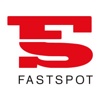Web Dev & Design for Gaming Company
- Web Development
- $10,000 to $49,999
- Sep. 2017 - Feb. 2018
"Their engineering team was easy to communicate with and worked well with ours."
- Gaming
- Timonium, Maryland
- 51-200 Employees
- Phone Interview
- Verified
Using BigTree CMS, Fastspot coded and built a website to boost content and design, with the primary new feature being integration of a third-party HR job application system. They also produced several videos.
User feedback has been overwhelmingly positive. Fastspot’s responsiveness and ability to turn constructive feedback into implementable, high-quality deliverables are hallmarks of their work. The team continues to provide assistance, even beyond the scope of the contract.



